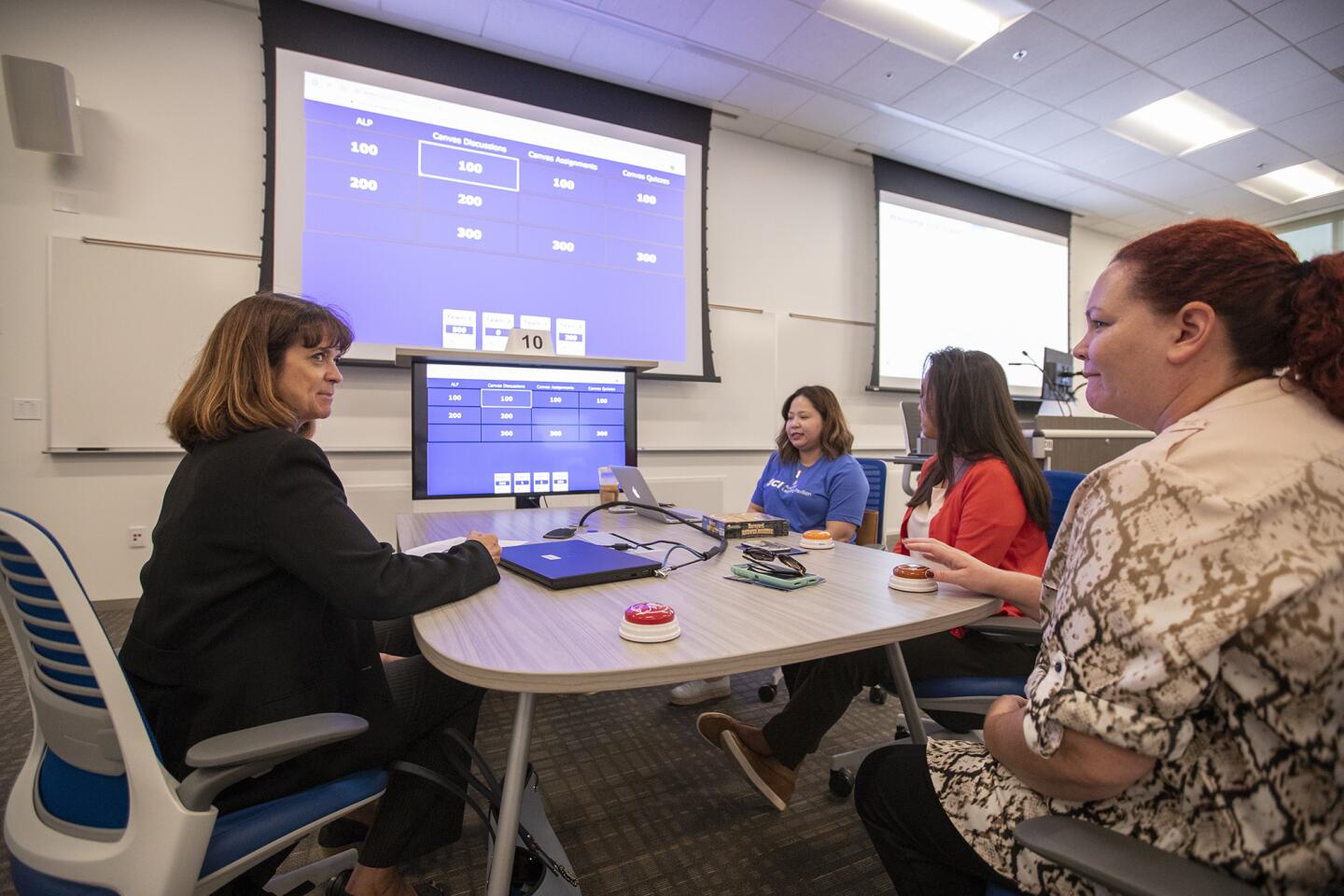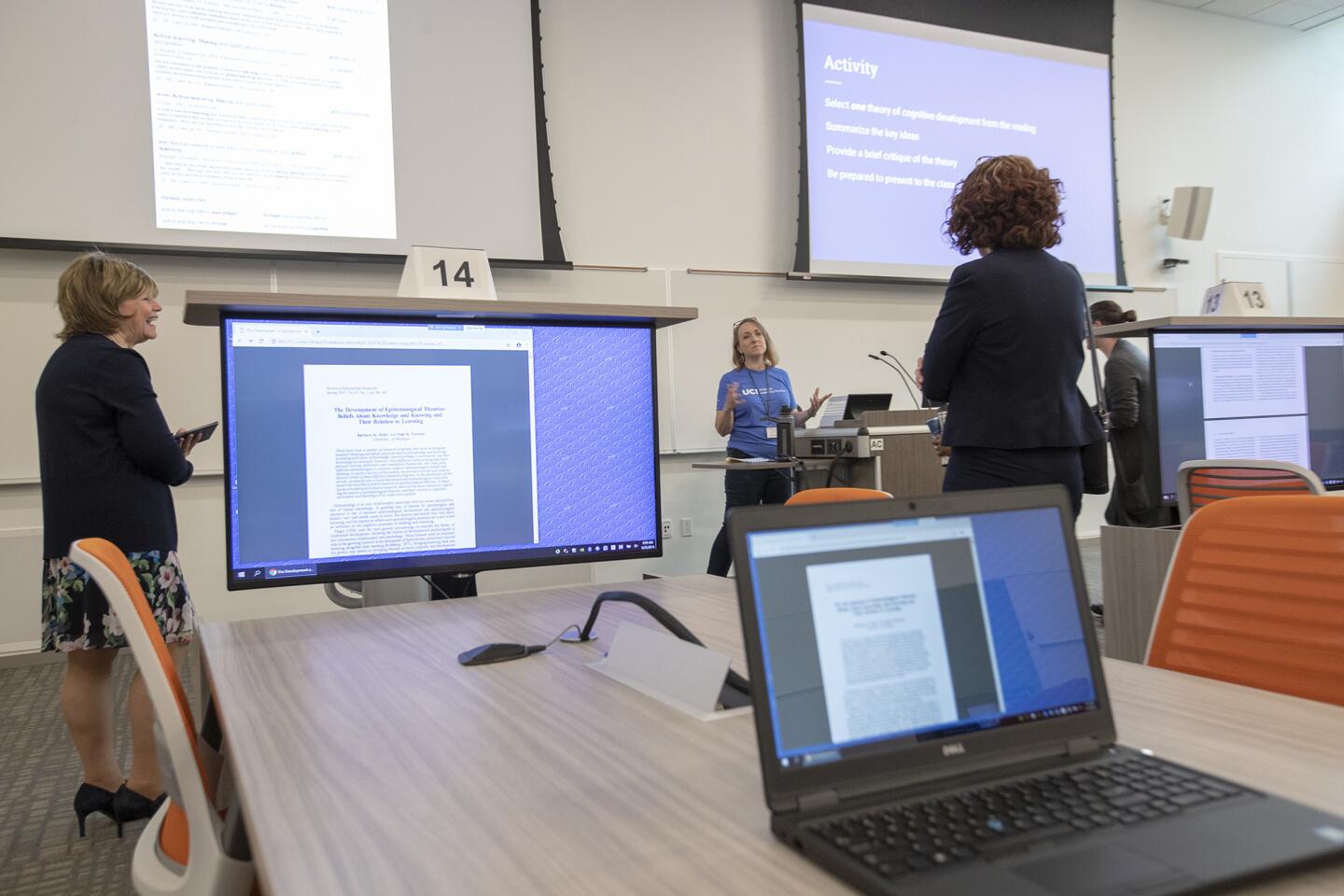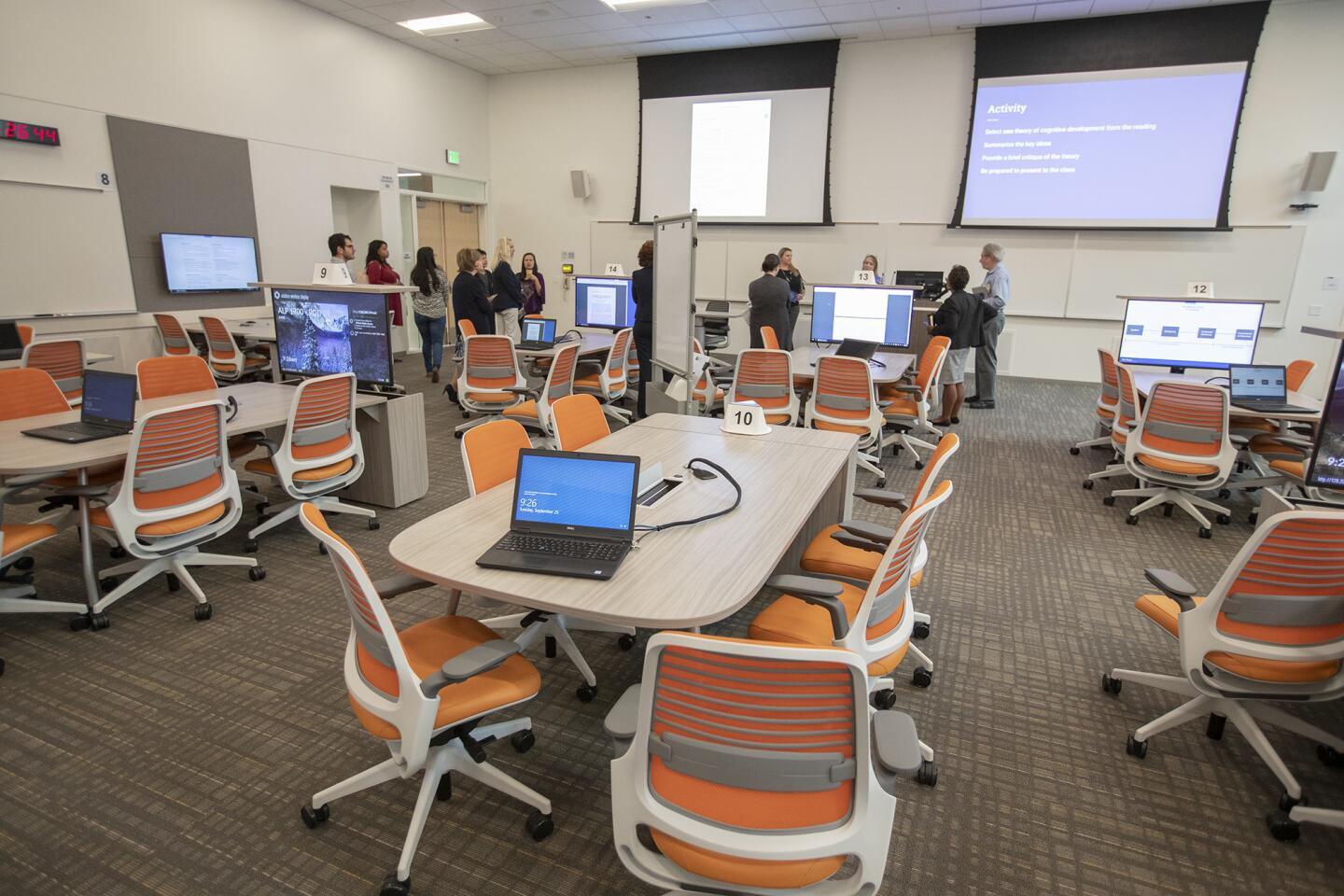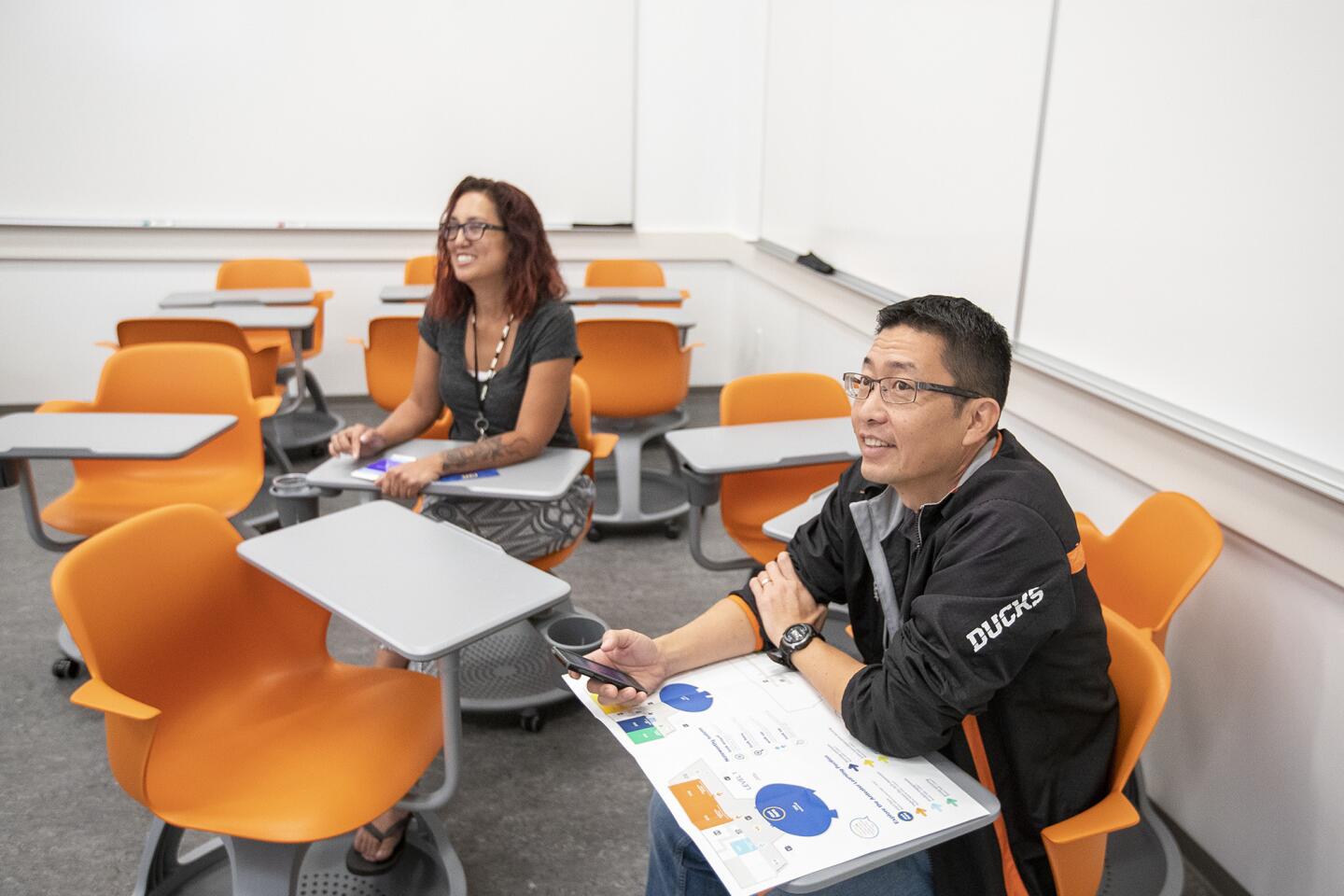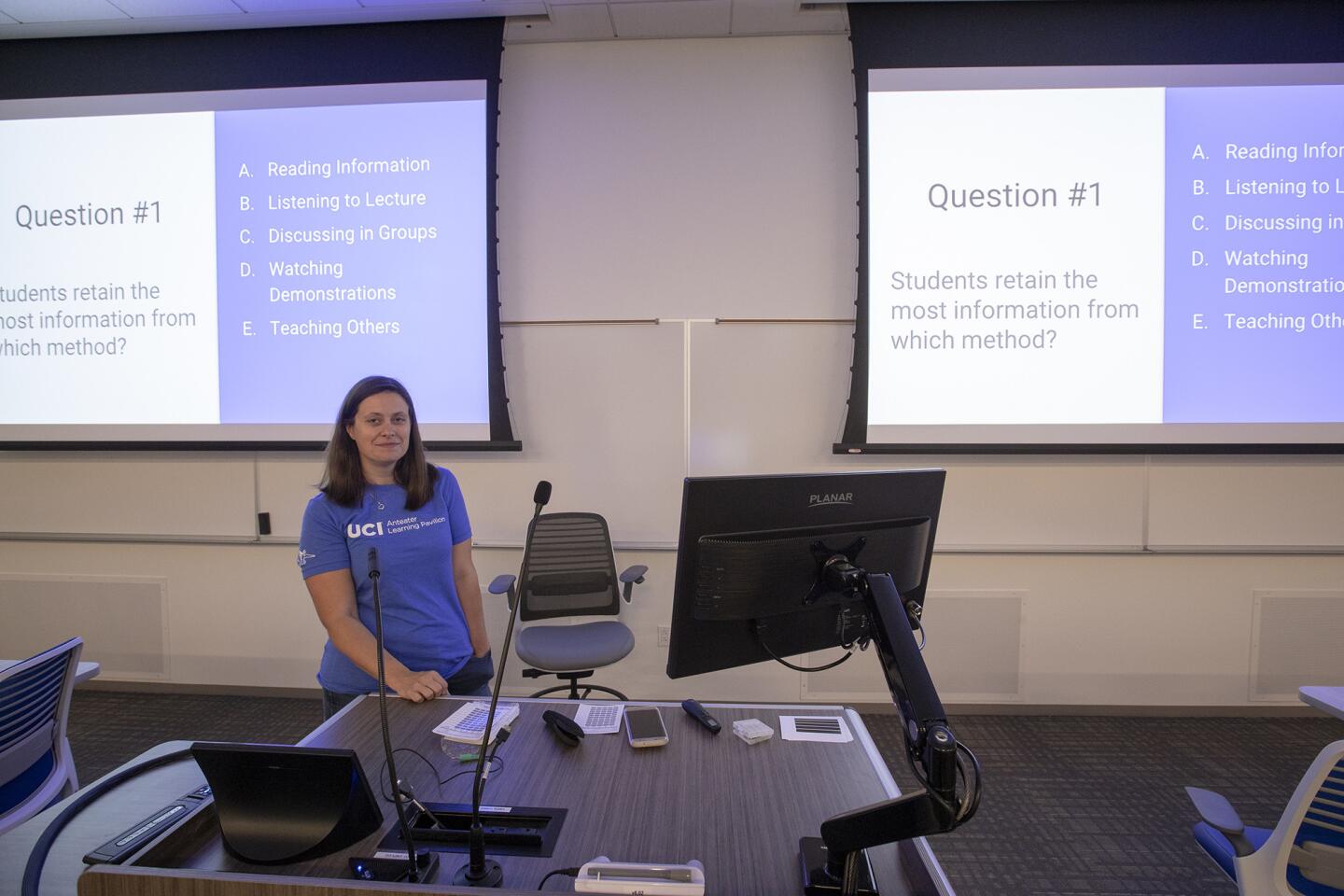UC Irvine devotes new $67-million complex to ‘active learning’
- Share via
Responding to its burgeoning student population and the effects of new technology on education, UC Irvine on Tuesday opened the Anteater Learning Pavilion, a building devoted entirely to “active learning.”
The $67-million, three-level complex is the first of its kind in California and one of only a handful across the country, according to UCI officials.
The pavilion, featuring flexible furniture and wireless computer screens and projectors, is designed to invite increased student collaboration by “leveraging physical space in new ways,” said Michael Dennin, UCI vice provost of teaching and learning.
Though many UCI professors have long used active learning techniques, such as separating students into small groups for discussion, the new building is meant to push even further away from the lecture model.
“We call it active because you think that the traditional lecture is a very passive activity,” UCI Chancellor Howard Gillman said. “The very best educational science is telling us that is not the most successful way of getting people to understand concepts, work through issues and achieve at a high level.”
Dennin said the biggest increases in student performance as a result of active learning techniques are among underrepresented groups, such as first-generation students.
The first floor of the Anteater Learning Pavilion includes a 400-seat auditorium, five classrooms, a lobby, a lounge and study space. Level 2 features a 250-seat auditorium, five more classrooms, a computer lab and four meeting rooms. All classes and auditoriums include swivel or mobile chairs to encourage movement and conversation.
On the top floor are staff and student worker offices, two more computer labs and six tutorial rooms for use by the university’s learning assistants — undergraduate students who work as staff members to offer peer-to-peer counseling and instruction.
“We’ve always known you really learn something well when you teach it,” Dennin said. “At the core of all active learning is students teaching each other.”
One teaching-by-learning technique used by UCI’s Division of Teaching Excellence and Innovation is called “Jigsaw.” It works by assigning tasks to small “home groups” of students, then moving individuals to “expert groups” focused on specific topics, then returning them to their original groups to present what they’ve learned.
“The advantages of this technique is that it’s collaborative vs. repetitive, and students take ownership of the learning process,” UCI educator Amir Saeidi said. “It also improves communication skills, and the teachers have more of a role as a facilitator.”
An example of a student activity that involves active learning is the immediate feedback assessment technique, or IFAT, a testing system that uses cards resembling lottery scratchers. When students scratch a correct answer on the card, a star is revealed. It replaces waiting for grades with an interactive experience.
Active learning methodology applies to every subject at UCI, and faculty members are being trained and certified to work in the new ALP.
Andrea Aebersold, UCI director of faculty instructional development, designed the Active Learning Institute, which is expected to have certified about 200 faculty members by the end of the academic year.
“Because we’re so early in the process, we have a lot of faculty who are excited about it,” Aebersold said. “But I think as time goes on, there’s going to be more of those resisters who we’ll have to convince to want to do this.”
To receive priority to teach in the new building, instructors must complete the eight-week certification program, which has a long waiting list.
Meanwhile, the first classes in the Anteater Learning Pavilion will begin with the start of the fall quarter Thursday.
Twitter @CharityNLindsey
All the latest on Orange County from Orange County.
Get our free TimesOC newsletter.
You may occasionally receive promotional content from the Daily Pilot.
